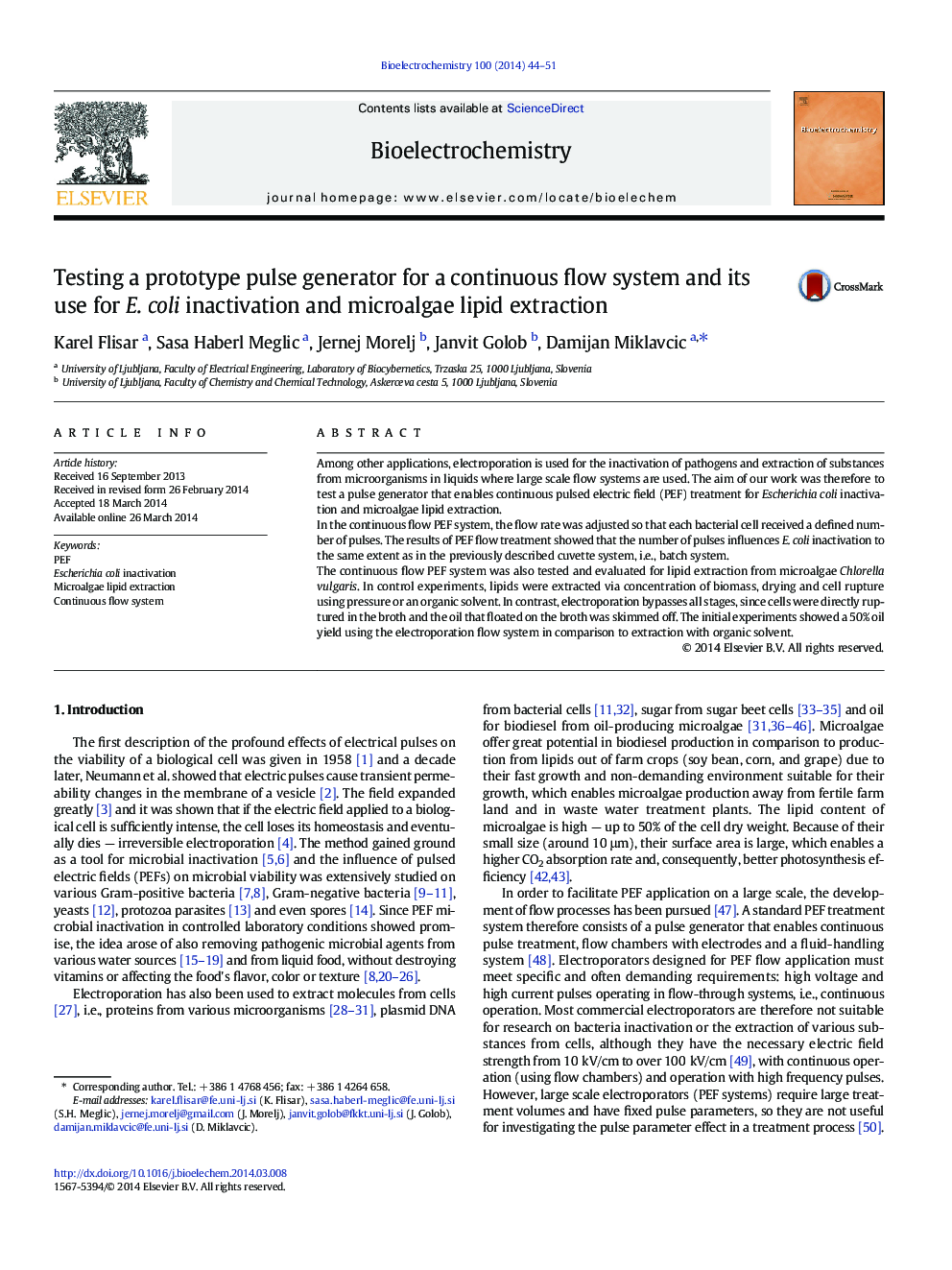| کد مقاله | کد نشریه | سال انتشار | مقاله انگلیسی | نسخه تمام متن |
|---|---|---|---|---|
| 1268090 | 1496912 | 2014 | 8 صفحه PDF | دانلود رایگان |

• Continuous operation high energy optic fiber-controlled laboratory electroporator
• Successful E. coli inactivation in a continuous flow system
• Microalgae electroporation lipid extraction gives 50% of organic solvent yield.
Among other applications, electroporation is used for the inactivation of pathogens and extraction of substances from microorganisms in liquids where large scale flow systems are used. The aim of our work was therefore to test a pulse generator that enables continuous pulsed electric field (PEF) treatment for Escherichia coli inactivation and microalgae lipid extraction.In the continuous flow PEF system, the flow rate was adjusted so that each bacterial cell received a defined number of pulses. The results of PEF flow treatment showed that the number of pulses influences E. coli inactivation to the same extent as in the previously described cuvette system, i.e., batch system.The continuous flow PEF system was also tested and evaluated for lipid extraction from microalgae Chlorella vulgaris. In control experiments, lipids were extracted via concentration of biomass, drying and cell rupture using pressure or an organic solvent. In contrast, electroporation bypasses all stages, since cells were directly ruptured in the broth and the oil that floated on the broth was skimmed off. The initial experiments showed a 50% oil yield using the electroporation flow system in comparison to extraction with organic solvent.
Journal: Bioelectrochemistry - Volume 100, December 2014, Pages 44–51